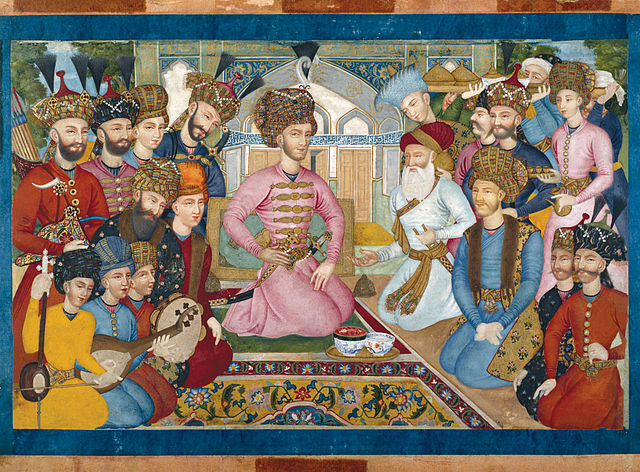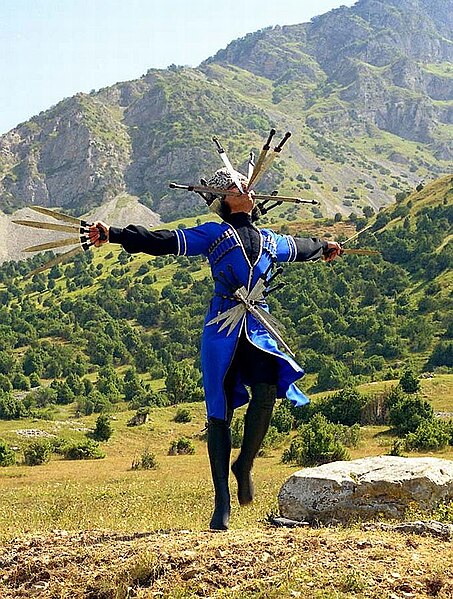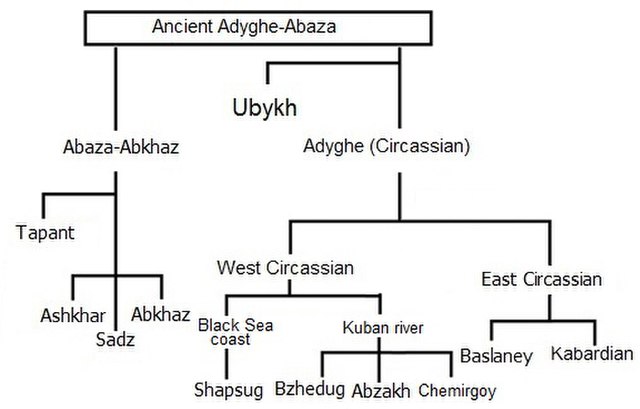Abbas II was the seventh Shah of Safavid Iran, ruling from 1642 to 1666. As the eldest son of Safi and his Circassian wife, Anna Khanum, he inherited the throne when he was nine, and had to rely on a regency led by Saru Taqi, the erstwhile grand vizier of his father, to govern in his place. During the regency, Abbas received formal kingly education that, until then, he had been denied. In 1645, at age fifteen, he was able to remove Saru Taqi from power, and after purging the bureaucracy ranks, asserted his authority over his court and began his absolute rule.
Abbas II (right) and a minister. 19th-century Indian artwork made after a Safavid original
A painting of Abbas II while negotiating with the Mughal ambassador.
Painting from the Qajar era, perhaps anachronistically depicting the Safavid victory over the Russian forces in 1651–1653
Silver coin of Abbas II, dated 1658/9 and struck at the Ganja mint. As a part of his plan to increase the state's revenue, the grand vizier Mohammad Beg had the gold coins prohibited, therefore flooding the realm with silver coins.
The Circassians or Circassian people, also called Cherkess or Adyghe are a Northwest Caucasian ethnic group and nation who originated in Circassia, a region and former country in the North Caucasus. As a consequence of the Circassian genocide, which was perpetrated by the Russian Empire during the Russo-Circassian War in the 19th century, most of the Circassian people were exiled from their ancestral homeland and consequently began living in what was then the Ottoman Empire—that is, modern-day Turkey and the rest of the Middle East. In the early 1990s, the Unrepresented Nations and Peoples Organization estimated that there are as many as 3.7 million Circassians in diaspora in over 50 countries.
Circassian warrior
Circassian traditional sword dance
The isolated Northwest Caucasian language family
The mosque of Abu Darwish (Adyghe descendant), one of the oldest mosques in Amman and considered as a major landmark.








